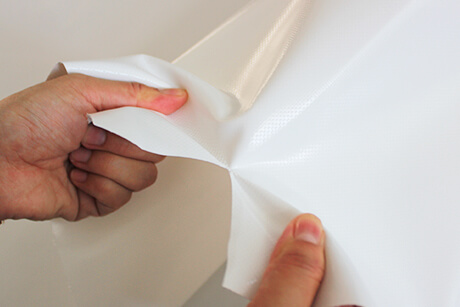Tarps News Categories

In the process of making PVC Tarpaulin, in order to enhance its performance, some additives are added. Light stabilizers are one of them. According to relevant persons, there are mainly five types of stabilizers that are often added, namely:
1. Hydro peroxide decomposition agent: It is one of hindered amine light stabilizers. Polymers can produce hydroperoxides during storage and processing, leading to photooxidative degradation of polymers. Hydroperoxide decomposers can decompose peroxides to generate stable nitrogen-oxygen free radicals and further capture free radicals. , Thereby controlling polymer degradation.
2. Free radical trapping agent: This kind of light stabilizer can trap the active free radicals generated in the polymer, thereby controlling the photooxidation process and achieving the purpose of light stabilization. Mainly hindered amine light stabilizer (HALS). It is the most promising new type of light stabilizer with an average annual demand growth rate of 20% to 30% in the world.
3. Ultraviolet absorber: It can effectively absorb ultraviolet light with a wavelength of 290~410nm, but rarely absorbs visible light. It has good thermal stability and light stability. According to its chemical structure, it can be divided into: o-hydroxybenzophenones, benzotriazoles, salicylates, triazines, and substituted acrylonitriles. Used together as auxiliary light stabilizer and hindered light stabilizer, especially in polyolefin or coating.
4. Light shielding agent: This is a kind of material that can shield or reflect ultraviolet rays, so that light cannot penetrate into the polymer, so as to protect the polymer. Light shielding agents include inorganic pigments such as carbon black and titanium oxide and organic pigments such as phthalocyanine blue and phthalocyanine green. Among them, carbon black has the best shielding effect.
5. Quencher: It can accept the energy absorbed by the chromophore in the plastic, and radiate the energy in the form of heat, fluorescence or phosphorescence, thereby protecting the polymer from UV damage. It has a good stabilizing effect on polymers and is mostly used in films and fibers.
you may also like
- Clear Tarpaulin Tent Material
- Heavy Duty Truck Cover Waterproof PVC Tarp Lumber Tarp
- 12'x12' Clear Vinyl Tarp Super Heavy Duty 20 Mil Transparent Waterproof PVC Tarpaulin with Brass Grommets
- Waterproof Tarp Lumber Tarps Cover for Truck
- Clear Glass Tarpaulin Pergola Sides Plastic Awning Transparent Waterproof Terrace PVC Curtains
- light weight truck lumber tarp 24'x27' pvc vinyl waterproof 18oz heavy duty truck cover
- Ultra Lightweight Airbag Parachute Lumber Tarp with 8 foot Drop
- 18 oz black Lightweight Heavy Duty 4 Feet Drop Lumber Tarp Steel Tarp For Flatbed Truck
- Waterproof PVC Canvas Tarpaulin Fabric Dump Tuck Tarp Vinyl Mesh Tarp
- 80% Shade Count PVC Mesh Tarp
others also viewed
- Advantages of JUM Lumber Tarps and Flatbed Truck T
- Man invents COVID Clear Curtain Booth
- What Are Mesh Tarps Used For? Do It Block The Wind?
- European Trailer Waterproof Cover Types Analysis & Application Recommendations
- Which the anti mold agents used in pvc tarpaulin
- How To Attach A PVC tarp to PVC pipe
- Clear vinyl Detailed introduction
- Basic introduction of Industrial Fabrics
- Something About PVC Tarpaulin
- How to choose a tarp tent